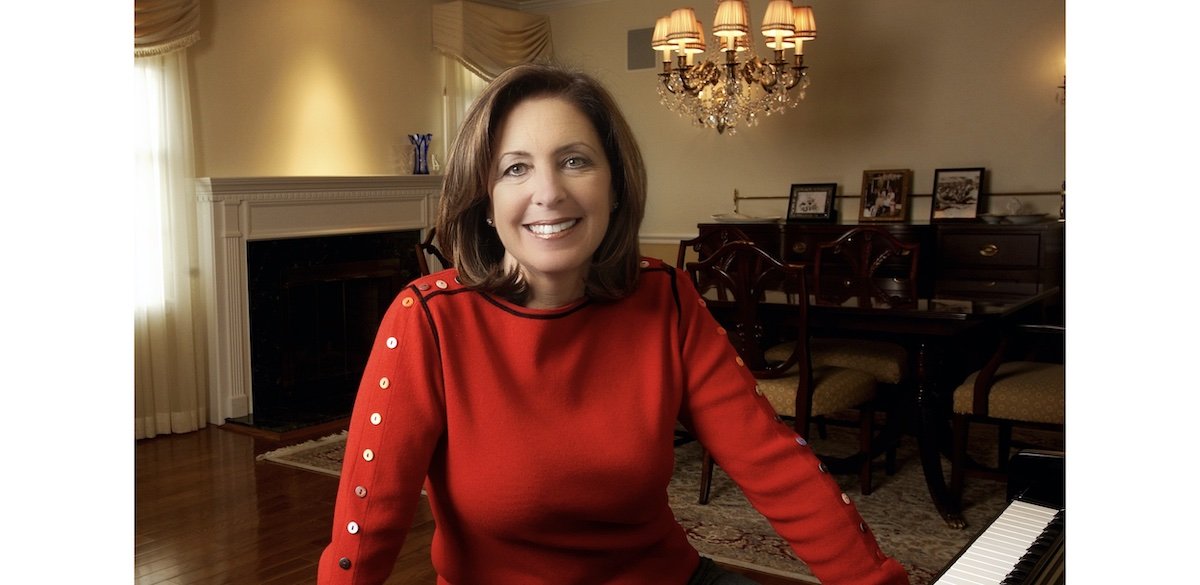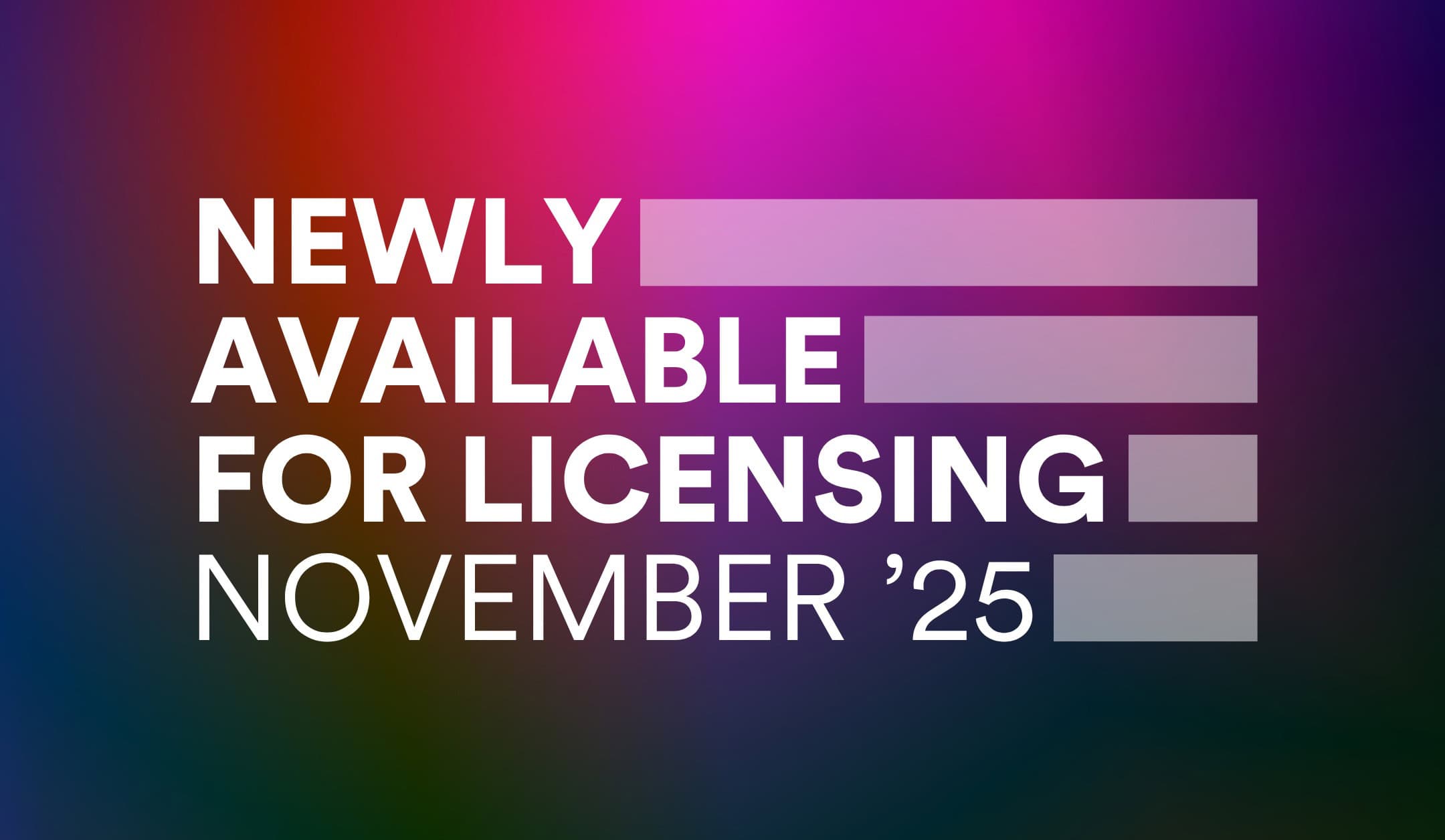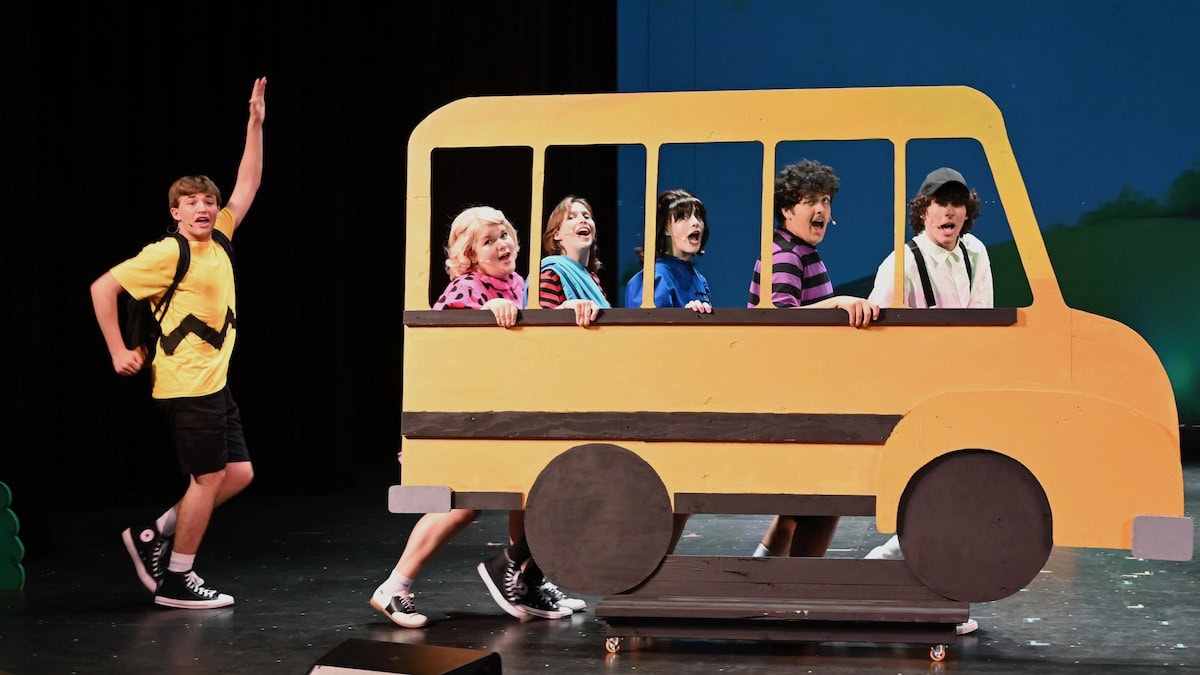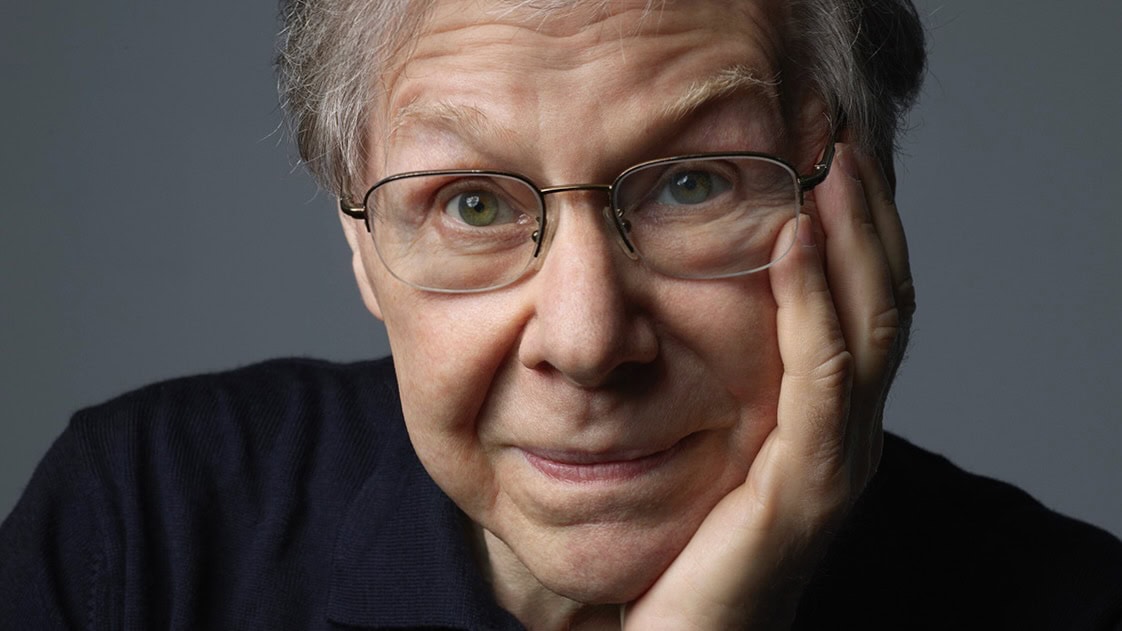
Andrea Green is an award-winning playwright, composer and music therapist. Her musicals for young performers present relevant universal stories and uplifting memorable tunes, and they deliver important messages on themes of tolerance, inclusion, understanding and respect. Concord Theatricals proudly licenses three of Andrea Green’s titles: Homeroom: The Musical, On the Other Side of the Fence and The Return of Halley’s Comet. We sat down with Andrea to discuss her career, her philosophy and her future endeavors.
You’ve said that “music is a healing art,” and you’ve dedicated your career to the creation of music and theatre promoting harmony, empathy and compassion. Where did this passion first spring up? When did you first begin making music?
Great music expresses great emotion. Without emotion, it’s just a collection of notes.
When I was a young teen my physician Dad took me with him on house calls and on hospital rounds. He encouraged me to play my guitar and the piano and to sing for his patients.
I found myself helping his patients through the music and the emotional connection.
It was at this time I began composing music and writing lyrics to help his patients express their feelings about their health concerns, their worries and about their hopes and dreams for the future. I also participated in a teen organized music group called The Young Set, where we performed in hospitals and nursing homes in the Philadelphia area. These early experiences taught me a great deal about the power of music and how it can be used to transform lives.
Your mother was a music teacher, violinist, poet and songwriter, and your dad was a general practice physician. How did their respective professions affect your career choices? How did you come to merge music and mental/emotional health?
Music and medicine were a huge part of my childhood. It was a blending of my mother’s insightful, thoughtful nature and her passion as a violinist, composer and poet and my Dad’s sensitive, outgoing, engaging, nurturing work as a healer physician. I got lucky to inherit some of their talents and their mutual love of the arts, along with a huge dose of empathy and caring for people. My parents introduced me to Broadway shows, The Philadelphia Orchestra and to many cultural music educational opportunities, as well as to stellar piano and voice teachers.
It was the beautiful combination of my parents’ love for me, love for the arts, and compassion for people that inspired me and led to my work in the field of musical theater and music therapy.
In 1982, you established your creative voice with the debut of On the Other Side of the Fence, a tuneful show set in two barnyards, side by side. How did this show come to be?
I was working as a music therapist at the HMS School for Children with Cerebral Palsy in Philadelphia, where I heard teachers debating whether their students who had severe physical disabilities could perform in a theatrical production alongside children without disabilities. The teachers were concerned that their students would be patronized and not accepted as equals. I felt differently. I believed that with the “right” musical theater framework and process, designed with an inclusive intention, the two diverse groups of children could come together successfully. I then created the musical On the Other Side of the Fence, with a metaphorical message that provided both groups of children with a common ground to work together. The purpose of the musical was to foster empathy, understanding and respect while at the same time offer a quality musical theater experience. The recitative style, with many character roles and a strong supportive chorus, provides a unique theater structure offering everyone an opportunity to be heard and to feel valued. Little did I know, On the Other Side of the Fence would be the first in a series of inclusive musicals I would create and direct for over 35 years.
“Having an extensive background as a music therapist has made me a stronger composer and playwright. Tapping into my music therapy skills –including my understanding of the human psyche – I can bring greater depth to the music and the musical theater process.”
What lessons about writing/collaborating/theatremaking did you learn from this experience?
Having an extensive background as a music therapist has made me a stronger composer and playwright. Tapping into my music therapy skills including my understanding of the human psyche, I can bring greater depth to the music and the musical theater process. I can delve into serious issues that are relevant. I can create music that reflects emotion and unifies and inspires connection. By creating diversity in the story and in the music, I can reflect a diversity of thoughts, opinions, feelings and life choices/styles. Having advanced music skills at the piano and in music composition gave me better tools to reach more people.
Collaboration in the musical process should present itself as a mutually contributing beneficial trusting relationship where both parties are open and willing to work together for the ultimate benefit of the piece and should be honest regarding the reality of each person’s contribution.
A few years later, you collaborated with Selma Tolins-Kaufman, and the result was Homeroom The Musical. How did you and Selma first meet? What was your working relationship like?
My co-writer Selma was a school psychologist who heard about my inclusive musical theater work with elementary-age kids and attended one of my productions. She then proposed for me to co-create a musical for middle school-age students using stories from English class personal journal writings as the foundation for the show. Selma got a grant and we combed through hundreds of teen writings and developed the concept for Homeroom the Musical. The most powerful stories from the teens jumped out and became the framework of the musical.
Selma and I worked collaboratively on the book and the lyrics and I composed the music. Selma’s school district initially produced Homeroom and then it went on to be produced at the Walnut Street Theater in Philadelphia until it was published by Samuel French, Inc.
What’s the message of Homeroom the Musical?
Homeroom the Musical presents a microcosm of life. It explores matters of importance to contemporary teenagers. Characters share feelings regarding relationships, success and failure and the significance of lies, loss, lockers and love. Individual stories weave together a riveting piece that takes the audience on a rough and tumbling ride through the school experience and adolescence. Homeroom addresses themes of acceptance, independence and responsibility, with styles that vary from pop to blues to Broadway.
The Return of Halley’s Comet is a personal favorite of mine. Where did you get the idea for this unique musical?
Most of my life I have worked with people who have been or feel they have been alienated in some way: Children with differences or disabilities. Teens who have struggled emotionally and socially. Adults who have had experienced disappointment and loss.
The Return of Halley’s Comet is a musical that reflects the way society responds (reacts) to people who are viewed as “different.” When strange looking non-verbal Halien (alien) beings descend peacefully from Halley’s Comet into the town of Centuryville, they are greeted with suspicion and fear, and seen as threats to society. As presented in the song “They Don’t Belong Here,” many of the citizens want to capture and “eliminate” the Haliens, and yet others show compassion and the desire to help them.
Most of us know what it feels like to be excluded or misunderstood, so the topic of alienation, intolerance and bullying is something that can be explored further in this piece. Teens especially, could use a show like The Return of Halley’s Comet, to help them better understand how to deal with those situations and feelings. The show is particularly relevant in addressing the debate over immigration.
Your shows are hugely popular with schools, theatre companies, and camps everywhere. What do you think are the elements that make these shows work so well?
There are several elements that contribute to why my shows work well with young performers. The musicals have a unifying effect and make an emotional impact because of their inclusive framework with stories about diverse characters who work together to overcome obstacles and in the process find understanding and meaningful connection to each other.
The music is easy to learn and produce. The stories present issues that young people face today as they witness and try to get along in a divisive, ever changing world with its many challenges. The musicals offer numerous character roles, giving many children the opportunity to be featured along with a strong chorus that is not just a backup group but one that plays a significant role throughout the piece. The shows are adaptable for large and small casts and work well for family theater productions with adult performers. They’re loaded with solos and fun contemporary dance numbers in diverse musical styles.
“It’s very important that musical theatre is challenging and engaging… Kids are more than capable of rising to these challenges, and as a writer I feel compelled to give them these kinds of opportunities.”
Many people hear “children’s theatre” and expect the music to be rudimentary. But your shows feature sophisticated, high-quality, tuneful theatre songs. Why is this important to you?
As a child I was captivated by classic Broadway shows like The Music Man and Flower Drum Song, and later was inspired by the work of composers like Stephen Sondheim, Stephen Schwartz and Marvin Hamlisch. I try to bring a similar sense of both sophistication and accessibility to my shows. I think it’s very important that musical theatre is challenging and engaging not just with regards to the content of the material, but also the construction of the music itself. Kids are more than capable of rising to these challenges, and as a writer I feel compelled to give them these kinds of opportunities.
Your musicals have been produced all over the world. Do you have special memories or anecdotes from any particular productions?
I was invited to Estonia to see a production of The Return of Halley’s Comet performed by the Muusikateater Generatsioon Company of Tallinn, Estonia. This inter-generational group, under the direction of Franka Vakkum, was touring my show throughout the country and – with my permission – translated the show into the Estonian language. When I landed at the airport and was pushing my suitcase towards the entrance I heard voices singing in Estonian. When I entered the lobby area I was greeted by cast members who were singing my songs in Estonian. They overwhelmed me with their beautiful voices.
Many of the performers, ranging in age from 8 to 92, shared with me how deeply this musical impacted them. They related the story to their own lives and in particular the history of Russian oppression in Estonia. Some spoke of how they have felt alienated like the “Halien” characters in the show and shared how being in the musical helped them work through some of their fears.
(View a video of The Return of Halley’s Comet here.)
Another significant memory is my trip to Ponce, Puerto Rico to see a production of Homeroom the Musical performed by teens from the Colegio-Ponceno. The school, which is all Spanish speaking, produced the show in English and did a superb high-level production.
I was so impressed with this group, I brought them to the Philadelphia area where they performed at The National Constitution Center, which was quite an honor!
Henry Nevison’s 2015 Emmy Award-winning documentary On the Other Side of the Fence focuses on your work as a composer/playwright & music therapist. How did this film come to be? Where can we see it?
I was extremely honored to receive a Mid-Atlantic Emmy, a bronze public service award from the United Nations, a silver Telly award and a gold medal from New York Film Festival.
On the Other Side of the Fence documentary is a behind-the-scenes look at the process and production of a musical (by the same name) performed by school children as acting and singing partners from the HMS School for Children with Cerebral Palsy (HMS) and Germantown Friends School (GFS) in Philadelphia. It is also the story of how I created the musical and a specific rehearsal framework to bring these diverse groups of youngsters together in friendship. Over a 30-year period this musical theater project evolved into a model program for other diverse groups to use, including my other musicals and a comprehensive educational teaching curriculum.
The documentary records transformative moments in the musical’s rehearsal and performance process. Rather than focusing on the final performance of the musical, filmmaker Henry Nevison follows the relationships that develop between the student pairs, with powerful interviews from current students, parents and alumni revealing the intense impact of the process. He dramatically weaves the story and songs of the musical with their relevant messages into the telling of the story of the children.
Henry stated, “ I loved seeing kids from very different worlds form close bonds, rehearsing and performing the musical together. On the Other Side of the Fence is a story of hope for people throughout the world with messages of accepting differences, building community and embracing diversity.”
To watch the documentary, visit: www.ontheothersideofthefence.com.
You’ve received so many awards and accolades! You received the 2019 Grand Prize for “Teacher as Hero” from the National Liberty Museum in Philadelphia. And the City of Philadelphia honored you with a Proclamation for 30 years of teaching tolerance to children in the area. So the City of Brotherly Love honored you for promoting tolerance! What is your unique connection to Philadelphia?
I grew up in a suburb of Philadelphia called Melrose Park and have worked for over 30 years with thousands of diverse groups of children in a variety of school, theater and hospital settings in the Philadelphia area. I was so honored to be recognized by The National Liberty Museum with the “Teacher as Hero” grand prize award and to receive a Proclamation from the City of Philadelphia for my tolerance teaching musical theater work.
“My mission is to help people find understanding, acceptance and respect for themselves and others. Bringing that message to children is more important than ever, given the polarizing times we’re currently living in.”
In 2015, you received a special award from the United Nations for your work “exemplifying the ideals and mission of the organization, for fostering empathy, understanding, acceptance and unity between people.” What do you think are the ideals and goals of your work that dovetail so perfectly with the mission of the UN?
My musicals present universal stories with diverse characters that live in diverse worlds.
Whether they are different animals on two sides of a fence (On the Other Side of the Fence), diverse fabrics who come to life in a clothing shop (The Same Sky), alien creatures who are searching for acceptance and friendship (The Return of Halley’s Comet), or teenagers who are struggling for identity, independence and acceptance (Homeroom the Musical), my musicals present some of the ideals of the United Nations – to foster empathy, understanding, compassion, acceptance and respect between people, no matter how different.
Tell us about your recent projects in St. John, U.S. Virgin Islands and in Uganda. Where do you hope to bring your music and message next?
I have been producing and directing my musicals at the St. John School of the Arts in the U.S. Virgin Islands for the past 7 years sponsored by the ASCAP Foundation. This past July 2021, I composed and produced the music video “Under the Moon” and partnered children from St. John with youngsters from the Kare Afrika Orphanage in Kampala, Uganda. Initially, I produced a skeleton music track so the children would have space to add their unique voices, instruments and dances to the piece. Over an intensive two-week period we (virtually) rehearsed the song, performed it and recorded it. The music video presents the beautiful connections that were made between the children and how the song was able to unite them across the globe. The Under the Moon Music Video Project is a model that can be replicated by other diverse groups around the world. I am hoping the United Nations or other world cultural humanitarian organizations will consider adopting this music partnership project to foster cultural exchange and communication.
Andrea, thank you so much for chatting with us. Is there anything else you’d like to say about your musicals and your work?
My musicals reflect my deep musical intuitive process and my mission to help people find understanding, acceptance and respect for themselves and others. Bringing that message to children is more important than ever given the polarizing times we’re currently living in. Over the years, I’ve personally been involved with thousands of children around the world in productions of my shows and that has been so gratifying. I hope that my musicals will continue to be produced and reach people with my messages of inclusiveness and mutual understanding.
For more about Andrea Green’s musicals Homeroom: The Musical, On the Other Side of the Fence, The Return of Halley’s Comet and other great shows, visit Concord Theatricals in the US or UK.

Newly Available for Licensing – November 2025 (UK)

K-12 Spring Musicals 2026

